What’s the Best Travel eSIM in 2024?
We may earn a commission from purchases you make after clicking links on this site. Learn more.I’ve talked a lot about eSIMs in the last few years, as the number of phones that support them has increased dramatically, and the number of companies offering them has risen alongside.
In theory, the technology is a godsend for travelers who don’t want to spend a small fortune on international roaming. Rather than having to seek out somewhere at the airport or in town to buy a physical SIM card, you can simply buy an eSIM on your phone before or when you arrive in the country.
With only a few exceptions, local carriers haven’t shown much interest in providing prepaid eSIM service to travelers. Sure, locals can sign up for an ongoing post-paid account, with all of the verification hassle and ongoing cost that accompanies it, but visitors wanting a local eSIM for a week or month? No dice.
That gap in the market has been well and truly filled, however, by other companies. Existing sellers of physical travel SIM cards have added eSIMs to their product line, and new eSIM marketplaces have sprung up where you can buy low-cost service for a few days, weeks, or longer.
It’s now at the point where for many travelers looking to stay connected on the cheap, the question isn’t whether they should use an eSIM, but which of the dozens of different companies selling eSIMs they should buy from.
Unsurprisingly, perhaps, that’s where I come in. I’ve used a wide range of eSIM products in my own travels around the world, for a variety of reasons. Sometimes I was only in the country a few days, sometimes it was to tide me over until I could find somewhere to buy a physical SIM, other times it was actually cheaper for the small amount of data I needed.
While all of the eSIMs I’ve bought have fundamentally done what I wanted (getting me connected), there’s been a noticeable difference between them in how much it cost and how straightforward the process was.
As a result, I thought it was about time to put together some recommendations. As mentioned, I’ve bought and used eSIMs all over the world. For this article specifically, I also purchased an Australian eSIM from each company, then tested it in the same part of the city on the same phone for a fair comparison.
In general the speeds were related more to which local carrier’s network was being used than anything else, but even allowing for that, there was some amount of variation.
None of them were slow enough to be a concern, however: you could do anything you care about as a traveler using any of the providers.
Quick Summary
Choosing which providers to include from the long list of similar companies was always going to be a bit of a judgement call. To help narrow them down to a manageable number for testing, I started out by looking for competitive pricing, worldwide coverage, and good data speeds.
Before getting into the detail: while it’s impossible to summarize the thousands of available packages in a single table, I’ve tried to give a very high-level overview of the kinds of prices you might expect from each company.
To that end, I’ve chosen one country that sees a reasonable amount of international tourism on each continent except Antarctica, plus a regional and global option. I’ve then shown the cost in USD for a similar eSIM package (5GB for 30 days unless otherwise noted) from each of the services I tested.
Most companies offer a range of validity periods and data allowances, but in some cases don’t sell anything close to 5GB/30 day package for a given country. When that’s the case, I’ve chosen a regional or global package if it exists, or marked it with a dash otherwise. A number in brackets refers to the number of countries covered by that package.
As you can see, even at a high level, it’s a complicated situation! One other thing to note is that some companies offer a signup bonus where you get a discount off your first purchase. If you haven’t used that company before, you can take that amount off the price shown below.
- AloSIM: Use the code TMA for 5% off your first purchase
- Airalo: Code NEWTOAIRALO15 gives 15% off your first purchase
- Yesim: Use the code Adapter for €3 (approx $3.25) off your first purchase
| 🇮🇹 Italy | 🇹🇭 Thailand | 🇺🇸 USA | 🇿🇦 South Africa | 🇦🇺 Australia | 🇧🇷 Brazil | 🇪🇺 Europe | 🌍 Global | |
|---|---|---|---|---|---|---|---|---|
| aloSIM | $14.50 | $19 | $16 | $15.50 | $13.50 | $15.50 | $20 (34) | – |
| Airalo | $14.50 | $10.50 | $16 | $15.50 | $12.50 | $15.50 | $20 (39) | $35 (124)3 |
| SimOptions | $25 (40)2 | $302 | $25 (6)2 | $35 (99)2 | $25 (6)2 | $35 (99)2 | $25 (40)2 | $35 (92)2 |
| Ubigi1 | $142 | $29 (16)2 | $172 | $55 (27)2 | – | – | $19 (33)2 | – |
| Nomad | $14 | $14 | $14 | $28 | $12 | $20 | $15 (35) | $45 (109) |
| Yesim1 | $202 | $222 | $232 | $352 | $282 | $362 | $21 (31)2 | $38 or PAYG (136) |
| easySim | $13 (36) | $16 (43) | $17 (50) | $41 (107) | $16 (43) | $29 (71) | $13 (36)4 | $41 (107) |
2 – 10GB/30 days
3 – 5GB/60 days
4 – if you buy a data pack for one of 36 countries in Europe, you can also roam in the other 35 countries
What Are the Benefits of eSIMs for International Travel?
Not everybody buys a new SIM when they travel: they simply roam with their provider from home instead. In some cases, that’s the right call: if you’re moving between countries in North America or the EU, for instance, there’s a high chance your cell company doesn’t charge you extra.
Elsewhere in the world, though, it can be a very different story. Costs can mount up very quickly, especially if you’re using a lot of data, to the point where it becomes prohibitive to take your phone out of flight mode.
For international travelers, one of the biggest benefits of eSIMs over buying physical local SIM cards is simply convenience. Rather than lining up with everyone else to buy an overpriced tourist SIM at the airport or not having a working phone until you get into town, you can be connected before you get off the plane.
Also, while dual SIM phones are becoming increasingly common, most of the time (in the United States in particular) that means one physical SIM slot and one eSIM. Having two physical SIM slots in your phone is very rare in the United States, and hit or miss elsewhere in the world.
This means that by using an eSIM when you travel, you can still leave your home SIM installed and able to receive calls and texts. Turn off data roaming on that SIM and in most cases you’ll just pay for the few calls and texts you make or receive. The usual caveats apply: check the details with your carrier!
What’s the Downside of eSIMs for International Travel?
The biggest issue with international eSIMs, at least for some people, is that most of them don’t come with a phone number. A few providers offer it, often only in certain countries, but if it’s something you absolutely require, you’ll definitely need to confirm before purchase.
These days, that’s far less of a problem for most travelers than it used to be. Many of us now do almost all of our text communication through apps like WhatsApp, iMessage, and Facebook Messenger rather than SMS, both because it’s free and because it’s more convenient for sending photos and videos.
Video calling friends and family is at least as common as voice calling when you’re overseas, and if you do need to call an actual phone number, you can do it for free or cheap with apps like Google Voice or Skype.
Even so, there are odd occasions when being able to be called on a local number is important, whether that’s for business reasons or just so your taxi driver can let you know they’re outside or running late. If having a local number is crucial for the way you travel, eSIMs may not be the right answer for you just yet.
In that case, take a look at physical international SIM cards instead. These are much more likely to include a phone number for voice and SMS alongside their data capability.
Does Your Device Support eSIM?
As with any eSIM product, the first step is to make sure your device actually supports it. Any iPhone from the XR/XS models onwards has eSIM built in, as does any Google Pixel phone released since 2017.
Many higher-end Samsung Galaxy phones do as well, along with a smattering of other phones and some tablets, laptops, and smartwatches. This list of eSIM devices is the most comprehensive I’ve found and is regularly updated, but still worth checking the specifications of your particular model if it isn’t listed.
Local, Regional, or Global?
Different companies take different approaches to how they offer eSIM service. Most provide a small range of options in each country where they operate, typically providing a certain amount of data for a week or a month.
If you’re only going to one country, or spending a decent amount of time in each of a handful of countries, this is likely to be the most cost-effective option.
Many providers also offer regional service, where one eSIM profile works in a number of different countries across a given region, again with a set amount of data for a certain period. Europe is an obvious one, but you’ll also find them for parts of Asia, North America, and elsewhere.
If you’re skipping from country to country reasonably quickly, and most or all of those countries are in a region covered by one of these packs, this will probably be cheaper and easier than buying individual country eSIMs.
Finally, a smaller number of companies offer global service. Usually it works much the same as the regional packs, with a certain amount of data provided (albeit often with a longer validity of up to a year).
One company also gives the option of a monthly subscription service instead, aimed at long-term travelers, while another has a simple Pay As You Go (PAYG) approach where you load your account with credit and use it as needed.
However they’re structured, these global packs are typically more expensive than local or regional varieties for most people, but if you don’t use a lot of data and are traveling all around the world, they can be worth a look.
Ok, time for the results!
aloSIM
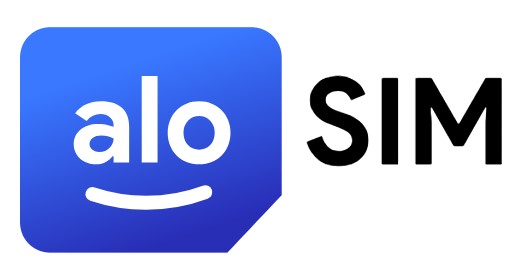
AloSIM is one of the newer kids on the eSIM block, and at this stage provides service in over 170 countries. Pricing tends to be very competitive in countries that see quite a bit of tourism, typically among the cheapest I’ve seen. You’ve also got the option of several regional packages, but no global ones.
Like most eSIM providers, purchasing and installation are very straightforward: pick your country and the data pack that suits, scan the QR code in your email or straight off the website, and you’re good to go.
On my Android device, the APN details weren’t automatically added, but there were clear instructions on how to do it manually. It took all of 20 seconds to get that set up, and the eSIM started working immediately afterward.
Note that all aloSIM plans are data-only: they don’t come with a phone number. The same company runs a service called Hushed that provides pay-as-you-go UK, Canadian, and US phone numbers, but they aren’t directly linked with your eSIM.
Based in Ottowa, Canada, you get better support from aloSIM than most of the competition, with 24/7 live chat and email on offer. That means a better chance of getting a problem resolved quickly, at least if you can find an alternative internet connection to do it with!
With some of its regional packs, aloSIM splits up larger areas into different sub-regions. With Europe, for instance, while you’ve got a pack that covers essentially the entire continent, you’ve also got versions that cover UK and Ireland, Western Europe, Eastern Europe, Mediterranean, and Scandinavia.
Check which countries are included in any pack you’re looking at: if all of your travel is within one of those sub-regions, this can save you a bit of money over the continent-wide pack.
Speaking of saving money, I’ve negotiated a small discount for TMA readers. Use the code TMA for 5% off your first purchase.
As with most providers, there’s an accompanying app that you can use to see the remaining validity of your eSIMs and top them up or buy new ones. It has the same features as the site, so there’s no particular need to have yet another app installed on your phone, but it’s there if you want it.
Using the Telstra network in Australia, I was very impressed with the data speed. It didn’t seem to be throttled, certainly not in any meaningful way at least, and at well over 100Mbps downloads, my biggest concern was burning through my data too quickly!

Summary
| Company | aloSIM |
| Countries | 170+ |
| Regional Packages? | Y |
| Global Packages? | N |
| Voice/SMS Service? | No |
| Best For | Low prices, speed, support |
| Downsides | No global data pack |
| Discount | Use the code TMA for 5% off your first purchase |
Airalo
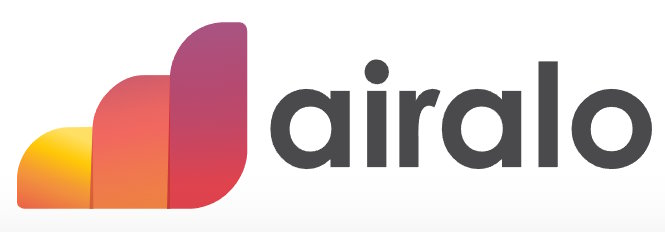
Airalo has been around for a few years now, and offers eSIM service in pretty much every country in the world at this point. Prices are some of the cheapest I’ve found on average, and in some countries it charges about the same for a few gigabytes of data as what you’d pay with a local SIM.
As with all providers, though, there are always exceptions. The price in a few countries, especially those that don’t see a lot of tourism, can be a lot more expensive than local rates. It’s worth doing a bit of research beforehand if you think that might apply to your destination.
I’ve used the company’s eSIMs in a number of countries, from Cambodia to New Zealand, and have found it simple to buy and activate service, and reliable in daily use. LTE speeds have been reasonable if not outstanding, which isn’t unusual for resellers like this.
In most parts of the world, you’ve got plenty of options when it comes to how much data you want and how long you want service for. Only in town for a few days? Grab a gigabye of data for five bucks. Exploring the country for a few weeks? Pick up a monthly pack with a big bucket of data instead.
Service in most countries is data-only, but not in all. If you do need a local phone number for calls and texts, it is available for a few destinations. You’ll need to click through to the country page and check the individual packages on offer, however; there’s no master list that I’ve found.
As well as individual countries, Airalo also offers eSIMs that work across regions, along with a global version. If you’re on a round-the-world trip, skipping quickly through several countries in one part of the world, or on a cruise where you spend one or two nights in different ports, these could make a lot of sense.
The company has an app that you can use to buy and activate eSIMs and check remaining validity, but there’s no particular need to install it if you don’t want to. The website works well, and you can install new eSIMs from a QR code with a couple of taps.
If you’re looking for more detail, I’ve also written up a complete review of my experience with Airalo. In brief, however, I’ve been happy with Airalo’s pricing and convenience wherever I’ve used it, and would have no concerns about relying on it again while traveling internationally.
On the Optus network in Australia, speeds were acceptable, if a little slower than other eSIM providers that use the same network. Whether there’s a business or technical reason for that, or whether it was just due to normal variances in network speeds, it’s hard to say. Either way, it wasn’t enough to make a difference in regular use.
Airalo runs regular promotions, which helps make their inexpensive pricing even cheaper. Code NEWTOAIRALO15 gives 15% off your first purchase.
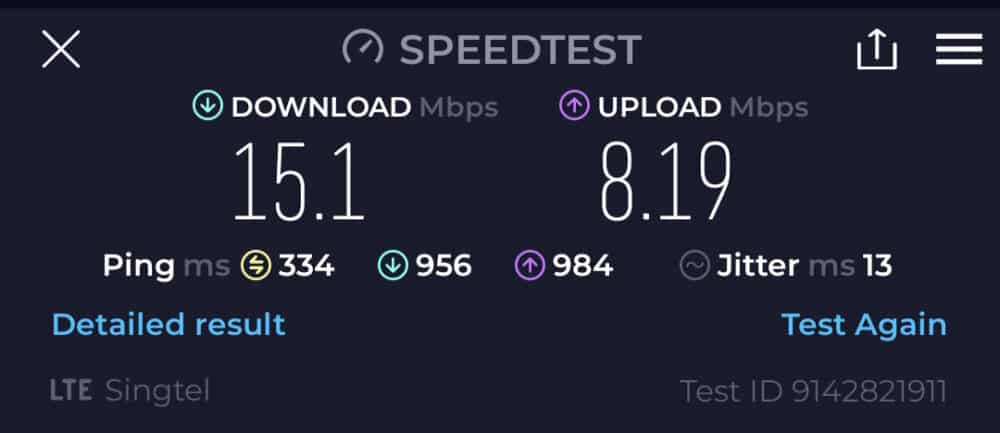
Summary
| Company | Airalo |
| Countries | 200+ |
| Regional Packages? | Y |
| Global Packages? | Y |
| Voice/SMS Service? | Partial |
| Best For | Worldwide coverage, range of options, low prices |
| Downsides | Slower speeds in my testing |
| Discount | Code NEWTOAIRALO15 gives 15% off your first purchase |
SimOptions

SimOptions has been around a long time: I’ve been recommending them for physical Europe-wide SIMs for several years. More recently, they’ve seen the writing on the wall and gotten into the eSIM game as well, with the same sets of plans and options available.
For that reason, they’re a bit different to the rest of the companies on this list. While SimOptions has individual countries listed on its site like everyone else, when you buy an eSIM from them, you’re usually buying regional service of some sort or other.
The challenge they have with this, though, is their pricing. For a while there wasn’t a lot of difference between data packs from SimOptions and other providers, but while everyone else has dropped their prices over time, SimOptions hasn’t really.
That means that for single-country trips, you’re likely better off with a different company. For regional and especially global packs, though, they’re definitely still worth looking at.
The other benefit worth pointing out is that SimOption’s packages are at least somewhat more likely to include a phone number. It’s definitely still not available everywhere, but many packages do include a real number that you can give out to other people and use for calls and/or texts as needed.
Buying your eSIM is pretty straightforward, and with only a handful of packages available for a given country or area, it doesn’t take long to decide what to go for. It’s not the most beautiful website in the world, but it’s functional and does the job well enough.
Installation is handled slightly different to most other providers: you receive an email with the QR code and manual install details rather than being taken to a web page with that information. I don’t mind that approach: it can make it easier to install your new eSIM when you land somewhere new if you didn’t do it before you left home.
I expect this is due at least in part to SimOptions not having a dedicated app for managing and topping up your eSIMs or buying a new one. I received a text with a USSD code to use instead: it’s a pretty old-school approach, but it did tell me how much data I’d used and when the eSIM expired.
Using the Telstra network in Australia, speeds were good: significantly faster than anything on the Optus or Vodafone networks, but slower than some of the other providers that also use Telstra. As I say elsewhere, all of the providers were fast enough to do anything you’re likely to care about as a traveler: this was no exception.
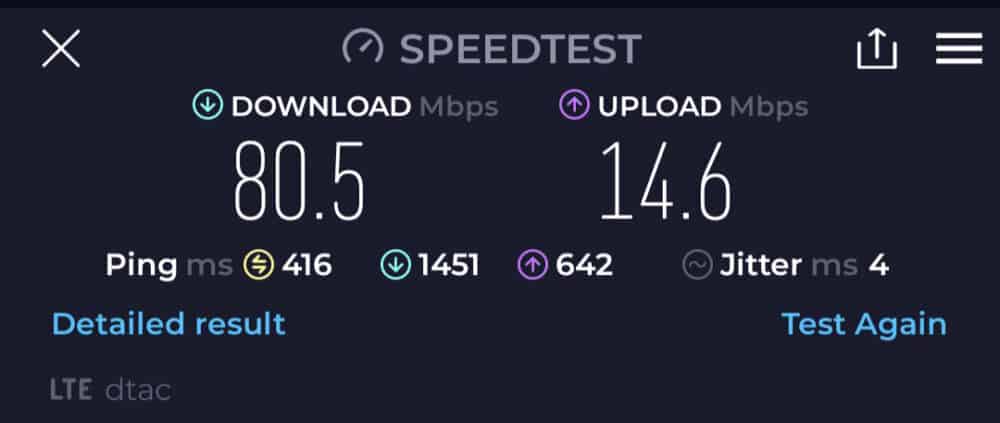
Summary
| Company | SimOptions |
| Countries | 160+ |
| Regional Packages? | Y |
| Global Packages? | Y |
| Voice/SMS Service? | Partial |
| Best For | Regional coverage, phone number availability |
| Downsides | No mobile app, relatively expensive for single-country trips |
Ubigi
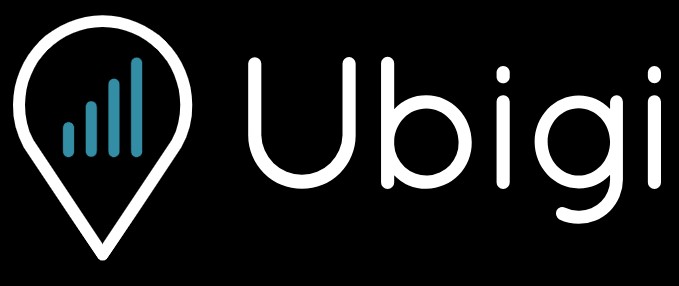
I was torn whether to include Ubigi in my research or not. On the one hand, service is available in almost every country in the world, large amounts of data are available in some places, and it offers the cheapest prices I’ve found for certain countries.
On the other, data is expensive and/or limited in several other countries, prepaid global packages are terrible value, and there’s no option for voice or SMS service at all. In the end I decided to check it out, with the expectation that it probably wouldn’t suit every traveler.
The company offers service in 190+ countries, or in other words, almost anywhere you’re likely to find yourself as a traveler. That number doesn’t tell the full story, though: in places like Australia and Brazil, you’ve got one small, expensive local data package available, plus maybe one or two regional or global options.
In other places, the story is completely different. Head to Italy or the United States, for instance, and not only do you have a wider range of local packages, the pricing is much better. The 10GB/30 day data pack for Italy was cheaper with Ubigi than anywhere else I checked, and you can buy up to 50GB at a reasonable price if you need it.
Some of the regional packs offer pretty good value as well: the company’s catchily-named EU27+UK+SWISS option, for instance, provides 10GB of data for a month across all 31 countries for $19. That’s really pretty good.
If you travel regularly, but not necessarily for long periods at a time, there’s also a package that’s valid for a year and gives you 2GB of data per month. At $58, I’d probably be inclined to just buy service when I needed it instead, but if you don’t want to have to think about it each time, you could do worse.
Ubigi is the only company on this list that offers monthly subscriptions as well as one-off prepaid service. It’s mainly for customers looking for ongoing regional or global service: for the latter, $68/month gives you 5GB of data to use around the world.
It’s a reasonable way of ensuring you’ll be connected and have a useful amount of data available wherever you go, but note that there’s a minimum three month period before you can cancel. That’s good for digital nomads and other long-term global wanderers, but not for those on shorter trips.
It’s certainly a lot better than the company’s other global eSIMs, however. If you want a prepaid option, you can either pay $9 for 500MB valid for a day or $25 for the same amount of data valid for a month. That’s laughably poor value: if you want global service for a few days or weeks, there are far better options mentioned elsewhere in this article.
As I mentioned up top, Ubigi doesn’t provide phone numbers with any of its eSIMs: it’s purely data-only. If you want those, you’ll also need to look elsewhere.
When I first put this comparison together, I had major problems actually buying and activating a Ubigi eSIM, and even bigger problems getting anything in the way of useful support about it. Thankfully the company has redesigned the process to make it simpler, and it now works noticeably better.
On the upside, unlike the company’s customer service responses, data speeds in Australia were pretty fast.
Even so, Ubigi’s eSIMs aren’t something I’d recommend to everyone. I still have concerns about the customer service experience, and while data is inexpensive in some countries, it’s not great value at all in others.
By all means check out the prices for wherever you’re going; just be sure to look at the alternatives as well.
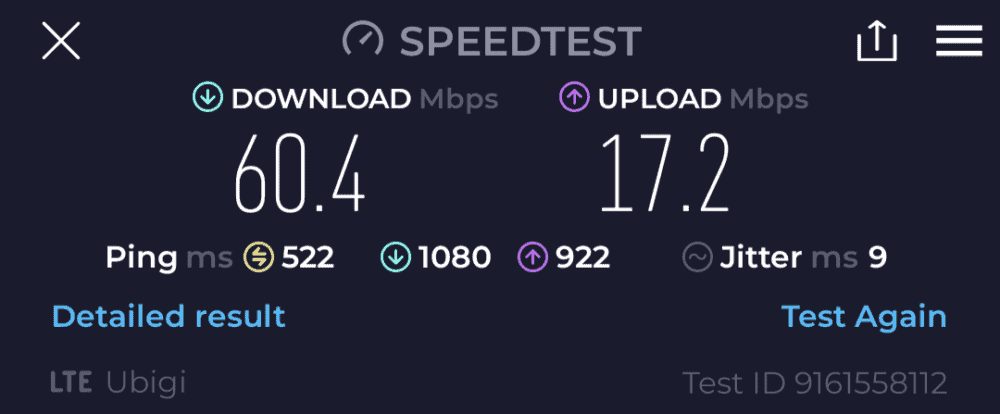
Summary
| Company | Ubigi |
| Countries | 200+ |
| Regional Packages? | Y |
| Global Packages? | Y |
| Voice/SMS Service? | None |
| Best For | Cheap in some countries and regions, worldwide coverage |
| Downsides | Expensive and/or small data packs elsewhere, very limited prepaid global packages, poor support |
Nomad

Nomad is a recent addition to the travel eSIM mix, first firing up its website in 2022. The site and app have a fun, modern design, and like most of the new entrants to this market, they make it quick and easy to find, buy, and manage your eSIM package.
At time of writing Nomad offers service in 165+ countries, along with a few regional and global packages. Pricing is generally pretty good, although it varies quite a bit: in some countries it was somewhat cheaper than the competition, and in others, quite a bit more. You’ll definitely want to check before purchase.
Where Nomad stands out, and the main reason I included it in this article, is its range of options for heavier data users and longer-term travel. With other companies, most eSIM plans top out at 5 or 10GB for a month. In many countries, however, Nomad offers packages of up to 100GB for 60 days.
If you’re going to be staying in a country for an extended period, or you know your Wi-Fi access will be spotty and want to have the option of using your phone as a hotspot instead, packages like these are pretty appealing.
Installing the eSIM is painless: you’ve got the option of scanning a QR code or doing it manually. If you’ve got access to another device (computer, tablet, someone else’s phone, whatever), the QR code is easiest. It arrives in your email, or you can scan it directly from the website after purchase.
If not, you can find manual instructions in the app or in your account on the website, including the code you’ll need to enter. That’s also where you’ll see your remaining validity period and data allowance after activation.
A few of the eSIMs that Nomad sells have a phone number and voice service included, but that’s very much a rarity. SMS is handled in an unusual way: you need to buy a separate eSIM with (at this point) a local number for the US, UK, or Canada, and use the Nomad SMS app to send and receive texts.
Although the recipient doesn’t need to do anything different, I suspect it’s still more hassle than most people can be bothered with. Still, if you desperately need a way of sending and receiving SMS, it is at least an option.
One thing worth noting: using Nomad eSIM is a two-step process. Unlike some of its competitors, your eSIM won’t activate automatically when you enable it on your phone or land in a supported country. Instead, you need to hit the activation link manually in the app or on the website.
In some ways, that’s a good thing: you have control over when the validity period starts, and can’t accidentally start the clock ahead of time. On the other hand, it’s an additional step, and at least with some of the eSIMs that Nomad sells, you’ll need an internet connection (e.g. Wi-Fi) to perform the activation.
Using the Vodafone network in Australia, LTE speeds were fine, and similar to those from providers on the Optus network. As I’ve mentioned above, you’ll often get slower speeds with resellers than what you’d get buying a SIM direct from the carrier, but rarely does it make much of a difference in the real world.
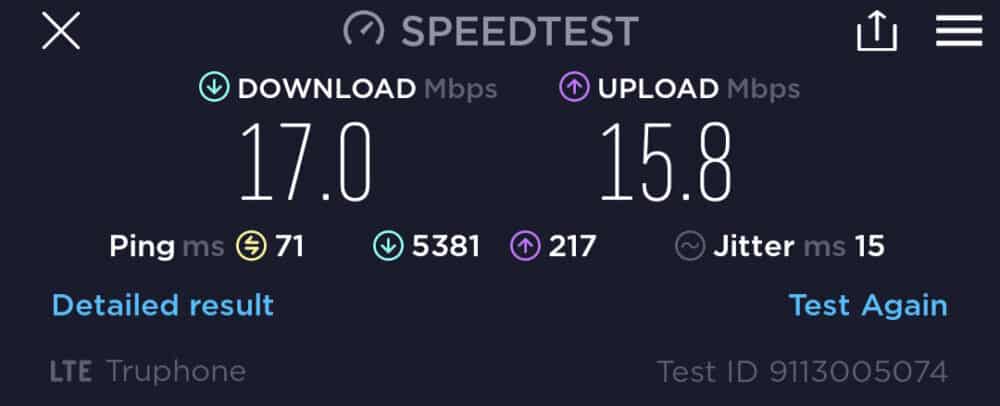
Summary
| Company | Nomad |
| Countries | 165+ |
| Regional Packages? | Y |
| Global Packages? | Y |
| Voice/SMS Service? | Partial voice, limited separate SMS service available |
| Best For | Low prices in some countries, range of options, large data packs |
| Downsides | Requires separate activation before use |
Yesim
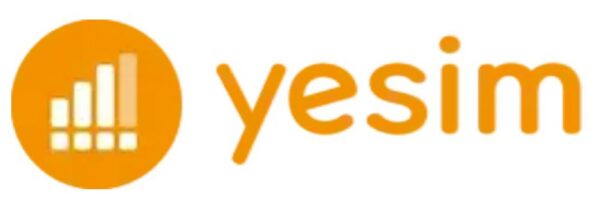
YeSIM is an unusual proposition. Based in Switzerland, its pricing tends to be slightly higher than the competition in most countries, but there’s often not a lot in it.
Most of its 30-day plans include a minimum of 10GB of data: that pushes the base price up, but means you shouldn’t need to worry about how much data you use. There are usually smaller plans available if you only need them for 15 days or less.
There are also unlimited data packages in most countries: you’ll pay a bit for them, but if you know you’re going to need a lot of data, it provides an option that most others don’t.
Where things get more interesting, and where I’d be more likely to recommend Yesim over the competition, is its Pay As You Go (PAYG) offering. As the name suggests, this is a simple approach where you load your account with credit and use it as you travel, without any need to buy a specific package.
Credit can be topped up in any amount and lasts for a year, which makes it a good option for infrequent international travelers. The per-megabyte rates are different in each country, and as you’d probably expect, are more expensive than buying a package with the same amount of data.
Where I see the value, then, is in two different scenarios. First, if you’re only in a country for a few hours or a day or two (on a cruise or tour, for instance) and don’t need to use your phone a lot, you’ll probably still save money over buying a chunk of data and then not using most of it.
On the other end of the scale, if you’re in a country for several weeks and/or expect you’ll use a lot of data during that time, a local SIM card is typically better value than a travel eSIM. In that case, you’d use Yesim’s PAYG option when you first arrive, to tide you over until you can pick up a local SIM in town.
I’ve used PAYG travel SIMs in this way in the past, and it avoided a lot of hassle at the airport, since I no longer needed to line up with everyone else to buy an overpriced tourist SIM card.
Yesim currently offers service in 136 countries, which is on the lower end for a global provider. Most popular travel destinations are covered, but you’ll want to double-check if you’re heading somewhere a little more obscure.
Installing the eSIM was easy: after choosing the package and paying for it, I was given a QR code to scan. The confirmation page warned that it could take up to ten minutes to start working after activation, however, and indeed it did. I also needed to restart my phone before the little LTE icon made its appearance, so it’s not the smoothest process.
Using the Telstra network in Australia, speeds were impressively high. One aspect I did like about Yesim’s offerings was that it clearly tells you upfront which networks it uses in each country, so you can cross-reference that you’ll have service if you’re heading somewhere remote.
Yesim also offers a virtual number service, although it’s pretty limited. If you need a local number to receive SMS texts in a handful of countries, you can get one for as long as you need it. You can’t make or receive calls with it, however, and as best I can tell, it only works with a few online services like WhatsApp.
Like some of the other providers mentioned above, Yesim operates a loyalty and referral program. Send a customer their way, and you’ll get the equivalent of two euros worth of credit to buy data packs or virtual numbers with.
Overall Yesim’s offering isn’t something I’d recommend for everyone, but it will be useful for some travelers, especially if a long-expiry, pay-as-you-go service suits the way you travel internationally. You’ll get 3 Euros off your first purchase if you use the promo code Adapter at checkout.
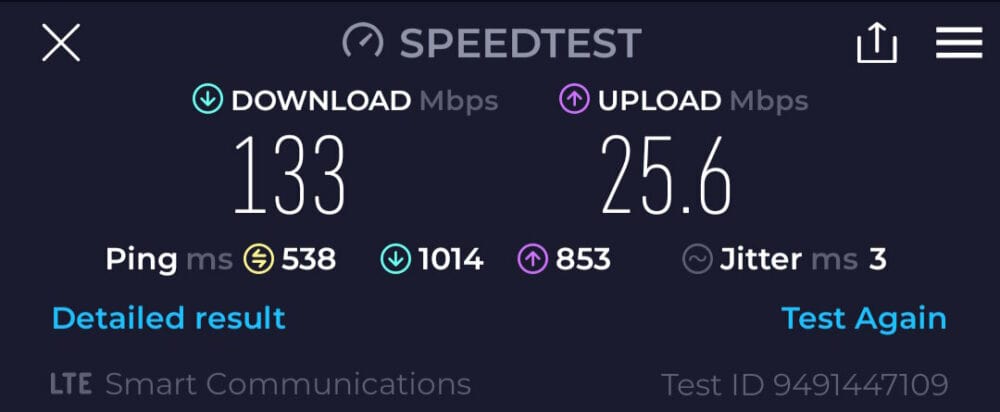
Summary
| Company | Yesim |
| Countries | 135+ |
| Regional Packages? | Y |
| Global Packages? | Y (Pay As You Go) |
| Voice/SMS Service? | Limited separate SMS service available |
| Best For | Unlimited data packs available in most countries, long-expiry global PAYG option |
| Downsides | Somewhat limited coverage area, not especially good value in most countries |
| Discount | Use the code Adapter for €3 off your first purchase |
easySim

If the bright orange in the easySim logo looks familiar, that’s because it’s part of the same group as well-known budget airline Easyjet (and many other companies). Given how many people they take overseas each year, it’s no surprise they got into the travel eSIM game as well.
Pricing is pretty competitive: they’re the cheapest option for much of Europe, whether you’re visiting a single country or roaming across the continent, and usually not much more than the lowest-cost provider in most of the rest of the world as well.
Data packs for most countries start at 1GB for a week and top out at 20GB for 30 days. There are a few companies offering larger packs than that, or versions with unlimited data, but easySim’s range covers most traveler’s requirements.
Other than the low prices in Europe, the biggest reason to use easySIM is their refreshing approach to roaming. Rather than forcing you to decide ahead of time whether you need a single or multi-country data bundle and then charging more for the latter, roaming is included and free in any country in the same or a lower price tier.
There are ten tiers at time of writing, ranging from 36 countries in group 1 (mostly the EU/EEA plus Turkey, Ukraine, and the UK), to 148 countries in group ten.
What that means is that you could buy a data pack for a two-week trip to Australia, for example, then use it on a layover in Singapore and ten days in France without doing or paying anything more. If you’re traveling through several different countries, this is a real money and time saver.
On the downside, I’d call the site design functional rather than beautiful, and there’s no mobile app for buying new packs or checking how much data you have left. You can do those things using the website on both mobile and desktop, of course: it’s just a bit clunky and the features are somewhat limited.
Even so, buying and installing the eSIM was pretty straightforward. I chose the country and data pack I wanted, paid for it, then waited for an email to arrive with a QR code.
The confirmation screen said it could take up to 15 minutes, which feels like too long if you’re at an airport waiting to get connected, but in the end it was in my inbox inside two minutes. From there, the installation process was seamless: scan the code, enable the new eSIM, turn on roaming, and away I went.
Unlike some of the other providers, easySIM only ever installs one eSIM on your phone: you can leave it installed between trips and buy a new data pack when you need it. Most of the others need you to install a new eSIM each time, so this approach saves a bit of effort if you’re a regular traveler.
Speeds in Australia were impressive: using the fast Telstra LTE network, I saw 100Mbps+ downloads wherever I tested it. It’s easy to see on the website which providers and type of service are supported: most countries have multiple providers listed, many of them with 5G if your phone supports it.
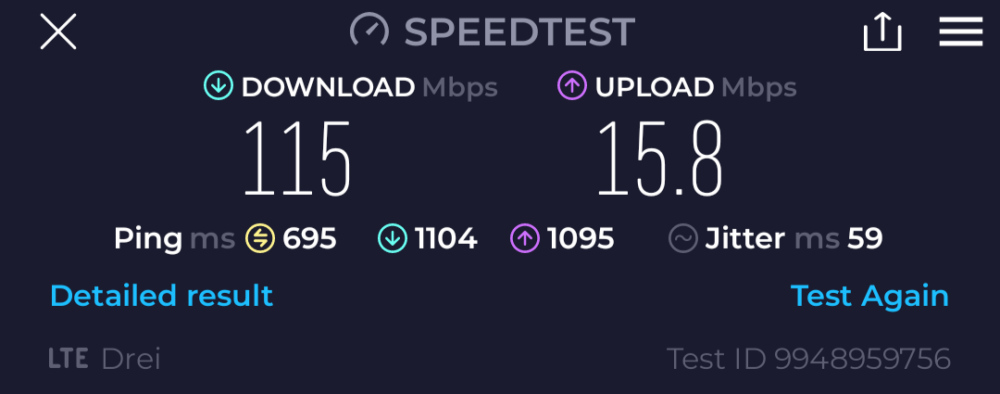
Summary
| Company | easySim |
| Countries | 145+ |
| Regional Packages? | Y |
| Global Packages? | Y |
| Voice/SMS Service? | No |
| Best For | Lowest prices in European countries, excellent roaming options |
| Downsides | No mobile app, basic website |
Get regular updates from the world of travel tech and remote work
News, reviews, recommendations and more, from here and around the web
Recommendations
While there’s little doubt that international travelers will benefit from using eSIMs for both price and convenience, picking the best option still requires a bit of work. Fortunately that has more to do with tracking down the best price than anything else: as long as your phone is compatible, purchase and installation tends to be straightforward.
Weighing up everything from the price and range of eSIM packages available to how easy they are to manage, how well the website and apps work, and suitability for a wide range of trip lengths and styles, my first pick for visiting most individual countries right now is Airalo.
While no international eSIM provider that I’ve come across has comparable prices to local SIMs everywhere in the world, Airalo consistently gets pretty close in most of the places that tourists regularly visit.
For short trips of a week or less, it’s often been cheaper to buy a pack from Airalo than whatever’s on offer at the airport kiosk, helped by the regular specials. Code NEWTOAIRALO15 gives 15% off your first purchase.
AloSIM has very similar pricing to Airalo, sometimes a bit more, sometimes a bit less for a given amount of data. It doesn’t offer service in quite as many countries (~170 vs ~200), but almost all popular spots are covered, and it’s had faster speeds in my like-for-like testing in Australia and several other countries.
You’ll also get a 5% discount off your first purchase if you use the code TMA at checkout: depending on where you’re going, that might be enough to make it the cheapest option on the day. I’ve used it in a few different countries now, and have been very satisfied with the speed and service.
If you need lots of data (let’s say 20GB or more), you’ll want to take a look at what Nomad has to offer. Like-for-like pricing varies widely (sometimes cheaper than the competition, sometimes significantly more expensive), but while most other companies tend to top out at about 10GB/month, Nomad offers up to five times that in some places.
For travel in Europe, easySim is a very compelling option. Not only does it have the cheapest data packs for most European countries, there’s no extra cost or effort to use that same pack across much of the continent.
The same tier-based roaming approach applies to other countries and regions as well, to the point where for multi-country trips I’d suggest looking at easySim before any of the other providers.
Speaking of multi-country trips, if easySim doesn’t suit, take a look at SimOptions instead. It regularly has some of the lowest prices when you plan to visit several countries in a given area, and especially if you’re looking for a global option.
You’re also more likely (although still far from guaranteed) to be able to get a phone number with SimOptions if you need it, especially in Europe.
Yesim has a useful long-expiry global option that lets you just pay for the data you use without having to buy a specific package. Beyond that, pricing is similar or slightly higher than much of the competition, although you may find that the three Euro discount you get after using the code Adapter at checkout tips the balance.
And finally, Ubigi. The eSIM performs pretty well and, in a few countries at least, is quite cheap. Just hope you never need to contact their customer support.
So there you have it, my findings on international travel eSIMS right now. Does it all make sense? Have you used a different company that you were particularly happy (or unhappy) with? Let me know in the comments!
Main image via Vlad Teodor/Shutterstock.com, logos via respective companies, screenshots via author






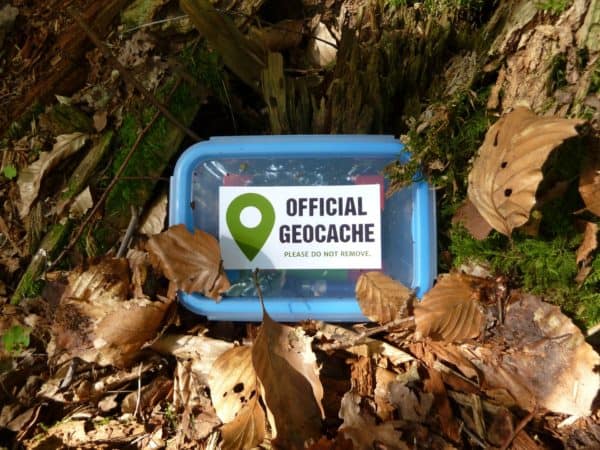


I’m a big fan of eSims.
Lately I’ve discovered Dent. So far it’s my favorite, with a different approach from the rest. I’ve only tried it on a short trip to the USA so far, and it worked perfectly.
Hey Dave, check out the new offering from Soprani[DOT]ca, the Canadian makers of open-source XMPP-based JMP Chat. You can sign up for their data eSIM or physical SIM (both still in beta, with a waiting list), load some non-expiring credit, and use it throughout the US and Canada (only available there at the moment). But as your credit doesn’t ever expire, you can keep it and use it for repeated trips in the US and Canada. (I think they’ll ship the SIM to non-US/Canada addresses, but please verify.)
Paired with their JMP chat account (which works anywhere you have an internet connection, but only comes with a US or Canada number), you can get cheap phone calls, SMS, and MMS service, too.
Their SIM/eSIM service: jmp[DOT]chat/sim
Main site, XMPP service: jmp[DOT]chat
KeepGo has some excellent coverage and rates. Their data is good for a year.
Keep Go’s Pisces plan worked well for me for a week in Paris, albeit mostly 4G on Orange network. And the leftover data will still be valid when I return next month!
Also good is that they give a French IP number, so services know I’m in France, and latency is low for VoIP. Many of the other eSIMs have Hong Kong, or other out-of-country IPs.
Thanks for this excellent coverage of eSIMs! I’m in the market for one, so this was timely.
Surprised you didn’t include Holafly. Their 60 day Europe “unlimited data” deal (AUD127) seems good (you can get a 10% discount if you go via their chat, thanks Manuela) and you get an Austrian telephone number. It includes the UK too and the claimed providers are good. I’ll let you know how I go when I get back in October!
Thanks Tony. I have a list of other eSIM companies to test and write up when I get a spare few days (I’ve been traveling for the last couple of months without a lot of laptop time!) – Holafly is one of them. 🙂
I am a fan of Ubigi because you just have to install it once and you can always buy data on it, even if you are in another country already and don’t have an internet bundel as the eSim you install allows for a free connection to their service.
With other services I had to install a different eSim per package or even per purchase, and maintaining those on the phone after expiration. Also some others require to already have an internet connection to be able to activate the package first, which is annoying when arriving at a place to discover their wifi is broken when counting on it being available.
Also, sometimes the packages from my default sim from home can be interesting as well. My provider offers monthly packages when you go somewhere, valid for 31 days. So it is always worthwhile to check-out your own providers offering before jumping through loops.
I’ve used Airalo eSIMs successfully twice (a six-month global and a single-country one), but the seven-day one I bought for Isle of Man never did work when I was there last month, despite much troubleshooting with Airalo Support. They refunded the money.